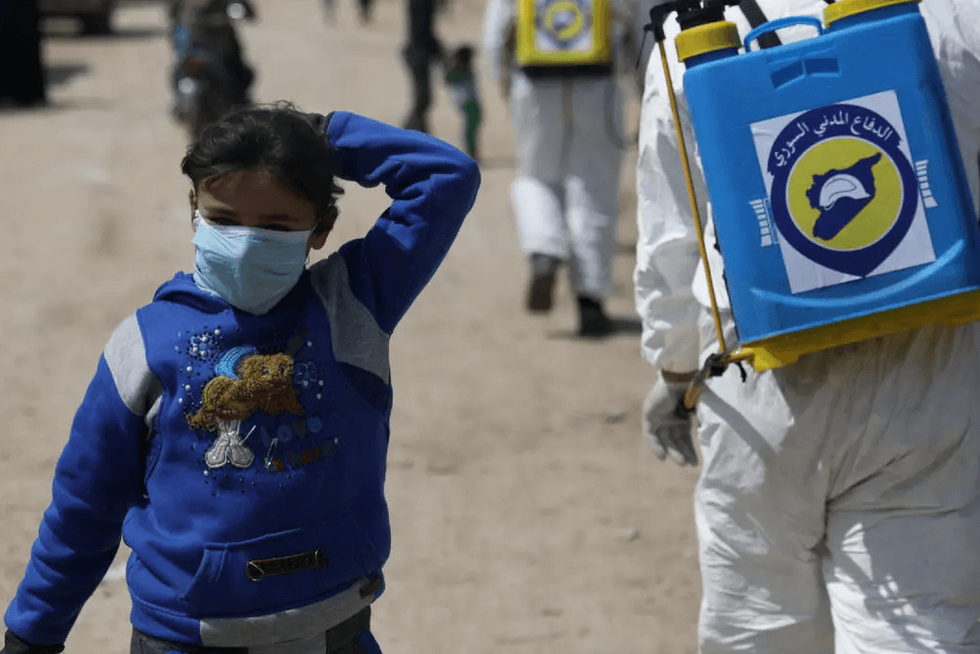Covid-19 in Syria: A Crisis Within a Crisis
While it is safe to say no country was perfectly prepared for this pandemic, in war-torn Syria its effects on the population have been particularly severe. By March, President Bashar al-Assad had closed borders, schools, and restaurants, while the movement of people between different areas was restricted in order to prevent a nationwide outbreak. The first Covid-19 cases and resulting deaths were officially reported in the middle of the same month. Testing capacities, however, remain insufficient and highly centralized in Damascus. Experts estimate there to be a much higher number of undocumented cases, due not only to this lack of testing, but also the widespread destruction of infrastructure, the authorities’ limited capacity, and the country’s close ties with Iran, which has been hit hard by the virus.
According to UNHCR, more than 13 million people in Syria already depend on relief and international aid. Given the substantial destruction of buildings and infrastructure, many people live in improvised housing and confined spaces, especially within displaced communities. Maintaining a two-meter distance from others is simply impossible, while the lack of clean water and other hygiene measures exacerbates the already-high risk of infection.
The situation is even more severe in Idlib, where some 3 million civilians live in crowded conditions with minimal access to medical care. The UN uses the UNSC cross-border authorisation from Turkey and has set up coordination hubs to ensure the distribution of least some medical supplies. While a ceasefire has been agreed for now, past experience suggests such ceasefires only hold for so long. The three main foreign actors on the ground - Turkey, Russia, and Iran - have all been struck by Covid-19 themselves. It remains uncertain if this will help the ceasefire’s prospects, as these countries fight other battles at home, or whether their distraction will allow the regime to press its military operations further.
Beyond Idlib, the Syrian healthcare system in general has been left in ruins by the nationwide war. Several medical facilities have been intentionally bombed and destroyed by the regime and its allies, leaving civilian populations even more vulnerable. Medical supplies remain scarce, and up to 70% of healthcare personnel have left the country. Experts estimate that only some 60-70% of hospitals across Syria were fully functioning at the end of last year. Even before the crisis, the closing of border crossing points resulted in a severe shortage of foreign aid, especially for healthcare supplies.
Similarly, the war had left the Syrian economy crippled even before the Coronavirus pandemic. Now, the economy is in deep crisis, with prices skyrocketing and the loss of over 90% of the local currency’s pre-war value against the US dollar. As Covid-19 pushes the world towards a global recession, Syria’s economic woes are only expected to worsen. In part, this dire economic situation is the result of the war, corruption, nepotism, and the exploitation of national resources by regime allies. Neoliberal reforms and privatization measures are the cornerstones of Syria’s economic downturn, social inequality, and broken infrastructure. Many people work as day labourers or in the informal sector, and so have been hit particularly hard by the lockdown measures imposed. The majority of Syrians already live below the poverty line, and simply cannot afford to stay at home. To make ends meet and provide for their families, they have no choice but to disregard containment measures and put themselves and others in danger. They see the threat of starvation as greater than that of infection with Coronavirus.
At the same time, Syrians cannot rely on their government nor expect any significant financial compensation. The bankrupt Syrian state either does not have the means to support its people, or existing funds are reallocated to the pockets of regime loyalists. As seen previously with reconstruction measures, the regime uses assistance to support “good” Syrians, meaning those living in areas which were not former opposition strongholds.
Indeed, the regime remains true to its usual patterns and instrumentalises the pandemic when needed. It controls the distribution of aid going through the capital, and significant numbers of aid workers report that Damascus has prevented the transfer of aid supplies to non-government-held areas and the northeast, while also obstructing cooperation with international aid agencies. Accurate numbers of infections and Covid-19-related deaths remain unpublished. Experts suspect this is only partly the result of the government’s attempt to distract from its very limited resources to combat the outbreak, and is also due to the state’s weakened institutions and limited capacity. The government uses its propaganda channels and security apparatus to cover up the spread of the virus and to remain in control of its citizens. To gather information on the health sector and its capacity is prohibited. Doctors are forbidden to comment on the Coronavirus outbreak. The security apparatus is used, once again, to threaten Syrian citizens with arrest and prosecution if they distribute any information related to Covid-19 that is considered to be false. Without clear data, it is conveniently difficult to differentiate between true and fake news.
While the entire world is on hold due to the pandemic, the Syrian people are once again left to fend for themselves. As the international aid still being distributed was already insufficient prior to the Covid-19 outbreak, local initiatives and solidarity networks have been formed in some areas to gather donations and provide food and services to those in need. Most of these were quickly ordered to operate only within government structures, repressed or co-opted by the security forces. While it might seem that Covid-19 is the greatest threat currently facing Syria, solidarity and the possibility of any networks developing the slightest bit of autonomy still appear to be the biggest fears of the autocratic regime.
###
Katia Schnellecke, Director of the FES Syria Project


